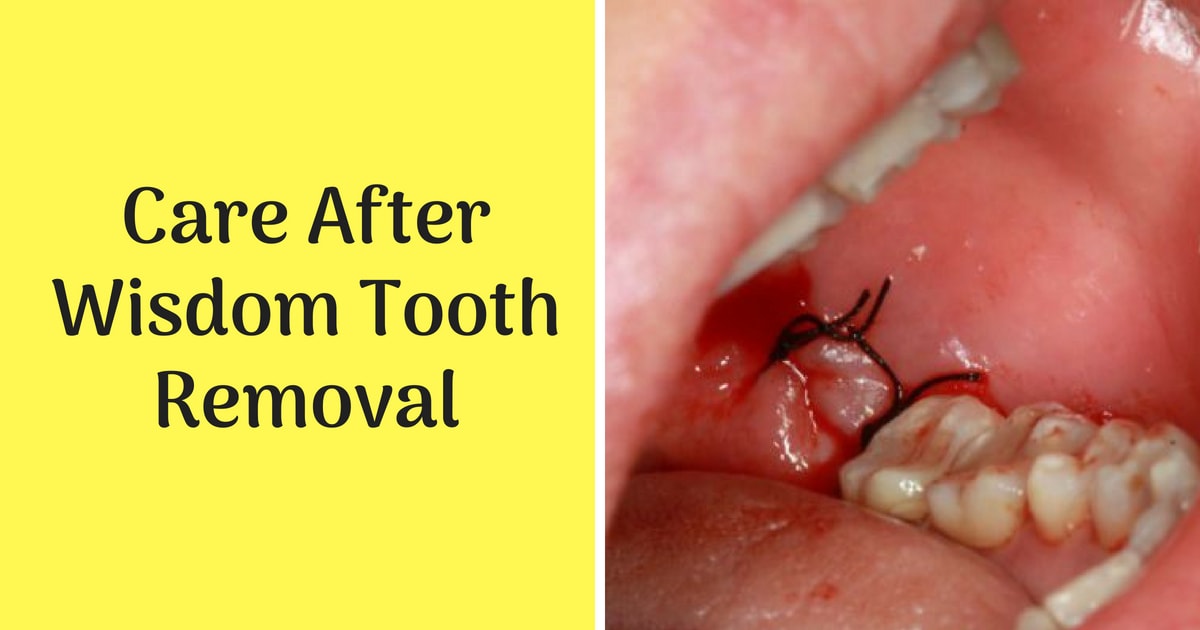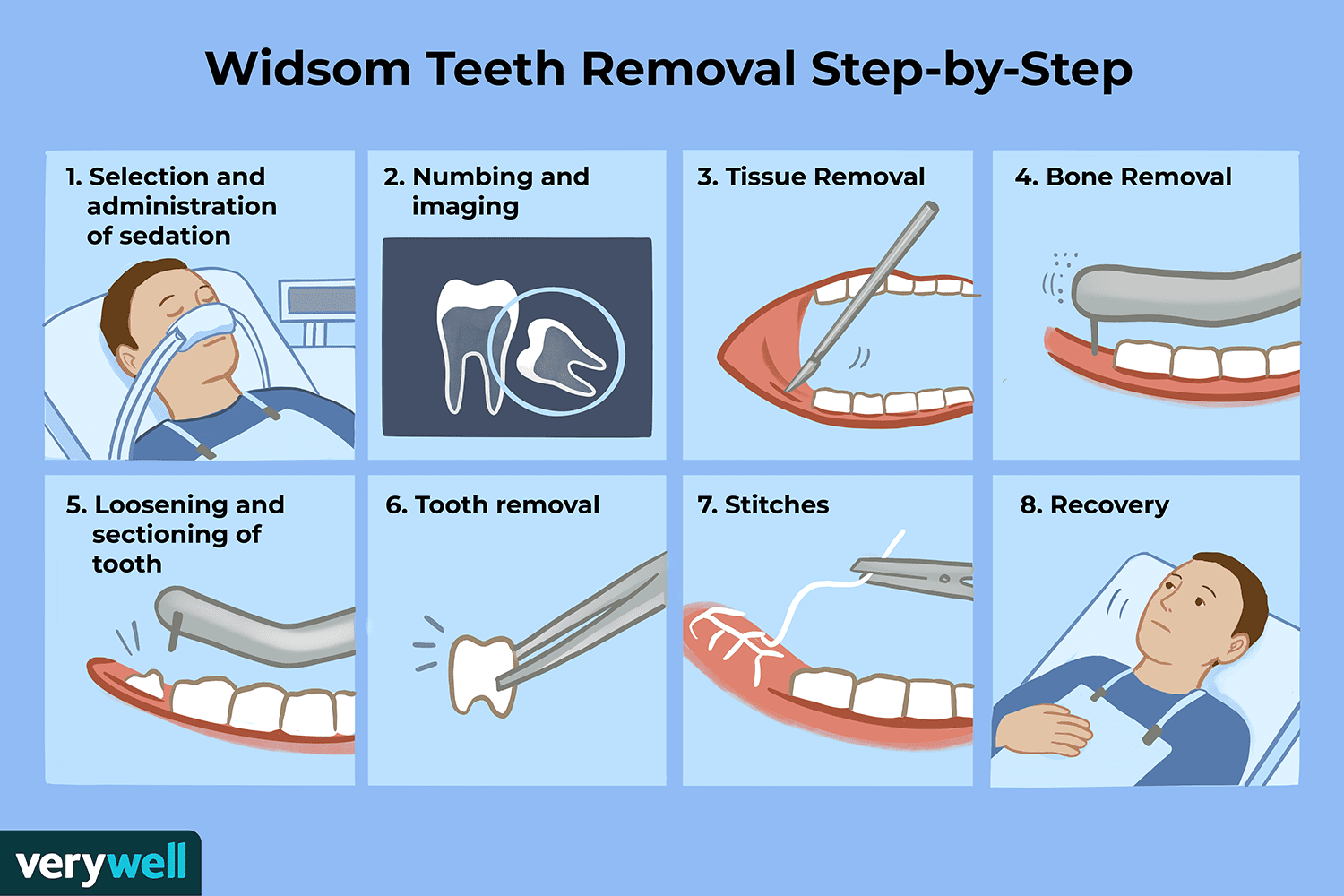Wisdom Teeth: Removal and Care
Wisdom teeth, also known as third molars, are the last set of teeth located at the back of your mouth. These teeth typically emerge in your late teens or early twenties. While some people have no issues with their wisdom teeth, for others, these teeth can cause significant problems. In such cases, wisdom teeth removal becomes necessary to preserve oral health.
In this article, we will provide an in-depth look at what wisdom teeth are, why they often need removal, the process of removing them, and the important aftercare to ensure a smooth recovery.
:max_bytes(150000):strip_icc()/how-are-wisdom-teeth-removed-1059378_FINAL-8a3c2fc6c2c4488499a5c0a25ce7af95.png)
What Are Wisdom Teeth?
Wisdom teeth are the third set of molars located at the very back of your mouth, two on the top and two on the bottom. These teeth usually emerge in your late teens or early twenties. Historically, they were important for our ancestors who needed them for chewing coarse foods, but over time, human jaws have become smaller, making these teeth less necessary.
In some cases, wisdom teeth emerge without any problems, but for many people, these teeth can cause significant issues due to lack of space, leading to discomfort or other dental complications.
Why Do Wisdom Teeth Need to Be Removed?
Not all wisdom teeth need to be removed. However, in many cases, removal is necessary because:
1. Impacted Wisdom Teeth
An impacted wisdom tooth occurs when the tooth fails to fully emerge through the gums. This can happen when there is not enough space in the jaw to accommodate the tooth. Impacted teeth may become infected, cause pain, or result in damage to adjacent teeth.
2. Misalignment
Wisdom teeth can emerge at odd angles, pushing against neighboring teeth and causing crowding. This misalignment can interfere with your bite and lead to dental problems like tooth decay or gum disease.
3. Infection and Inflammation
If a wisdom tooth partially erupts through the gum, bacteria can enter the area, leading to infection, swelling, and pain. This condition, called pericoronitis, can cause significant discomfort.
4. Cysts or Tumors
In rare cases, an impacted wisdom tooth can develop a cyst, which can destroy bone and surrounding tissue. Removing the wisdom tooth prevents further damage and potential complications.
5. Preventive Reasons
Even if wisdom teeth aren’t causing problems, many dentists recommend their removal as a preventive measure, particularly if they are likely to cause issues in the future.
Signs You Might Need Wisdom Teeth Removal
Some signs that may indicate the need for wisdom teeth removal include:
- Pain or tenderness in the back of your mouth
- Swollen gums around the wisdom teeth
- Difficulty opening your mouth
- Jaw pain
- Bad breath or an unpleasant taste in your mouth
- Tooth crowding or misalignment
- Frequent infections in the back of your mouth
If you’re experiencing any of these symptoms, consult your dentist to discuss whether removal is necessary.
The Wisdom Teeth Removal Procedure
Wisdom tooth extraction is a routine surgical procedure, but it’s essential to understand the process to ease any anxiety you may have. The procedure typically involves the following steps:
Step 1: Consultation and X-Rays
Before the extraction, your dentist will take X-rays of your mouth to assess the positioning of your wisdom teeth. This will help determine whether they are impacted or fully erupted and assist in planning the most effective removal technique.
Step 2: Anesthesia Options
The procedure will be performed under local anesthesia, sedation, or general anesthesia, depending on the complexity of the removal and your preferences. Local anesthesia numbs the area around the wisdom teeth, while sedation or general anesthesia may be used for more complicated cases or if you feel particularly anxious.
Step 3: Extraction of the Wisdom Teeth
Once you’re numb or sedated, the dentist will begin the extraction. For a fully erupted wisdom tooth, the dentist may be able to pull it out directly. If the tooth is impacted or has not fully emerged, the dentist may need to make a small incision in the gum and may need to remove the tooth in pieces to minimize damage.
Step 4: Closing the Incision
After the teeth are removed, the incision in the gum is usually stitched up with dissolvable sutures. In some cases, stitches may not be necessary if the extraction site doesn’t require any incision.
Step 5: Post-Procedure Care
Following the procedure, your dentist will provide instructions on how to care for the extraction site. They may prescribe pain medication, antibiotics, and provide guidelines on diet and oral hygiene during recovery.

What to Expect After Wisdom Teeth Removal
After the procedure, recovery typically takes about 3-5 days, but full healing can take several weeks. During this time, it’s essential to follow the aftercare instructions provided by your dentist to ensure proper healing.
1. Pain and Swelling
It’s normal to experience some pain and swelling after wisdom teeth removal. The pain should be manageable with prescribed medication or over-the-counter painkillers. Swelling usually peaks within 48 hours and gradually subsides.
2. Bleeding
Minor bleeding is common immediately after the extraction. Bite gently on a gauze pad for 30-45 minutes to help control bleeding. If bleeding continues, contact your dentist.
3. Diet and Oral Care
For the first few days, stick to soft foods like yogurt, mashed potatoes, and smoothies. Avoid hot, spicy, or crunchy foods that could irritate the extraction site. It’s also important to avoid sucking motions (e.g., using a straw), as this can dislodge the blood clot and lead to a condition known as dry socket.
4. Bruising and Jaw Stiffness
Some bruising or stiffness of the jaw is normal, and it will resolve within a few days. Applying an ice pack to the area for the first 24 hours can help reduce swelling.
5. Avoid Smoking or Alcohol
Smoking and alcohol can interfere with the healing process, so it’s advisable to avoid both during the recovery period.
6. Follow-Up Visit
A follow-up visit is often scheduled within a week of the procedure to ensure that the site is healing properly. If stitches were used, they will typically dissolve on their own, but your dentist may check the area to make sure no complications have arisen.

Complications to Be Aware Of
While wisdom teeth removal is generally safe, there are potential complications, including:
- Infection: Rare but possible, infection can occur if bacteria enter the extraction site.
- Dry Socket: This painful condition occurs when the blood clot at the extraction site becomes dislodged, exposing bone and nerves.
- Nerve Damage: In rare cases, the extraction process can damage nerves near the wisdom teeth, resulting in temporary or permanent numbness in the lips, chin, or tongue.
- Excessive Bleeding: Although bleeding is expected, some people may experience more significant bleeding, which could require further attention from a dentist or oral surgeon.
Wisdom Teeth Removal FAQs
Q1: How long does the recovery take after wisdom teeth removal?
A1: While initial recovery can take 3-5 days, full recovery may take several weeks. It’s essential to follow aftercare instructions to ensure proper healing.
Q2: Will I experience pain during the procedure?
A2: No, the area will be numbed using local anesthesia, and you may also be sedated. This ensures that you feel no pain during the procedure.
Q3: Can wisdom teeth removal cause swelling?
A3: Yes, some swelling is normal after the procedure. It usually peaks within 48 hours and gradually decreases.
Q4: Can I return to normal activities after the procedure?
A4: It’s best to rest for the first couple of days and avoid strenuous activities. You can return to work or school as you feel comfortable, but take care not to strain yourself.
Q5: What happens if I don’t get my wisdom teeth removed?
A5: Leaving impacted wisdom teeth untreated can lead to pain, infection, tooth damage, or misalignment of other teeth. In some cases, the condition can worsen, leading to more complex procedures in the future.
Conclusion
Wisdom teeth removal is a common procedure, but it’s essential to understand why it’s necessary, how it’s performed, and what to expect during recovery. Whether you’re experiencing pain or simply undergoing preventive care, removing your wisdom teeth can help prevent further complications and promote long-term oral health.
If you’re considering wisdom teeth removal, be sure to consult with a trusted dentist or oral surgeon who can provide personalized guidance based on your unique situation.
For more information on oral health and wisdom teeth, check out these external resources from the Mayo Clinic and [American Dental
Association](https://www.ada.org).


